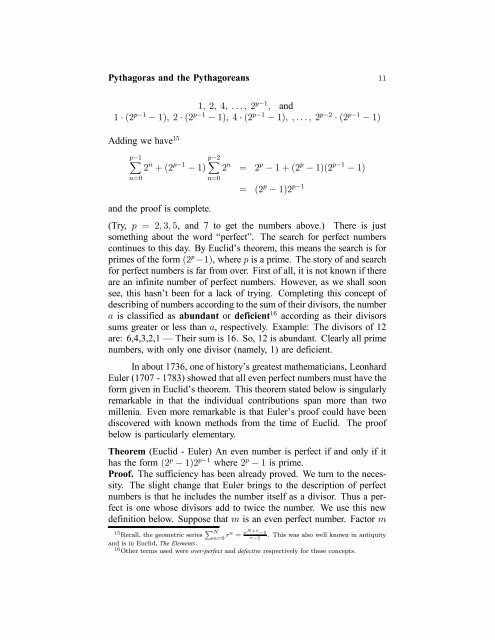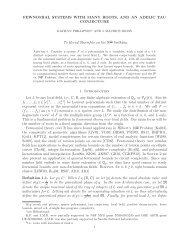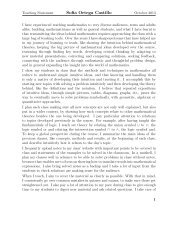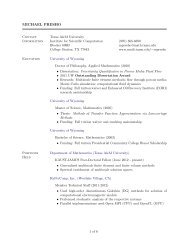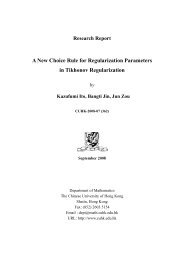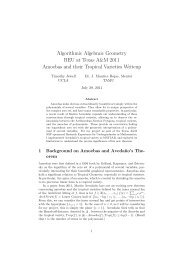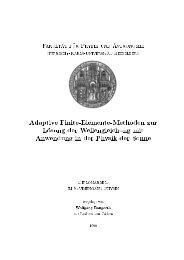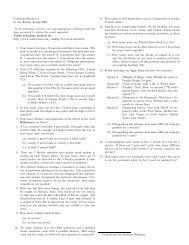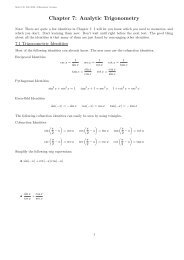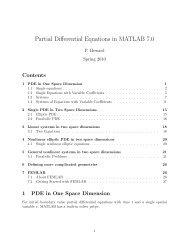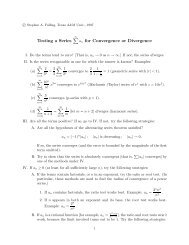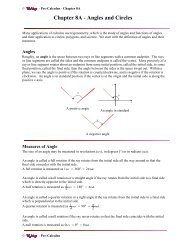Pythagoras and the Pythagoreans - Department of Mathematics
Pythagoras and the Pythagoreans - Department of Mathematics
Pythagoras and the Pythagoreans - Department of Mathematics
You also want an ePaper? Increase the reach of your titles
YUMPU automatically turns print PDFs into web optimized ePapers that Google loves.
<strong>Pythagoras</strong> <strong>and</strong> <strong>the</strong> <strong>Pythagoreans</strong> 11<br />
1, 2, 4, ...,2 p−1 , <strong>and</strong><br />
1 · (2 p−1 − 1), 2 · (2 p−1 − 1), 4 · (2 p−1 − 1), ,..., 2 p−2 · (2 p−1 − 1)<br />
Adding we have 15<br />
p−1<br />
X<br />
n=0<br />
2 n +(2 p−1 p−2 X<br />
− 1)<br />
<strong>and</strong> <strong>the</strong> pro<strong>of</strong> is complete.<br />
n=0<br />
2 n = 2 p − 1+(2 p − 1)(2 p−1 − 1)<br />
= (2 p − 1)2 p−1<br />
(Try, p = 2, 3, 5, <strong>and</strong> 7 to get <strong>the</strong> numbers above.) There is just<br />
something about <strong>the</strong> word “perfect”. The search for perfect numbers<br />
continues to this day. By Euclid’s <strong>the</strong>orem, this means <strong>the</strong> search is for<br />
primes <strong>of</strong> <strong>the</strong> form (2 p −1), wherep is a prime. The story <strong>of</strong> <strong>and</strong> search<br />
for perfect numbers is far from over. First <strong>of</strong> all, it is not known if <strong>the</strong>re<br />
are an infinite number <strong>of</strong> perfect numbers. However, as we shall soon<br />
see, this hasn’t been for a lack <strong>of</strong> trying. Completing this concept <strong>of</strong><br />
describing <strong>of</strong> numbers according to <strong>the</strong> sum <strong>of</strong> <strong>the</strong>ir divisors, <strong>the</strong> number<br />
a is classified as abundant or deficient 16 according as <strong>the</strong>ir divisors<br />
sums greater or less than a, respectively. Example: The divisors <strong>of</strong> 12<br />
are: 6,4,3,2,1 — Their sum is 16. So, 12 is abundant. Clearly all prime<br />
numbers, with only one divisor (namely, 1) are deficient.<br />
In about 1736, one <strong>of</strong> history’s greatest ma<strong>the</strong>maticians, Leonhard<br />
Euler (1707 - 1783) showed that all even perfect numbers must have <strong>the</strong><br />
form given in Euclid’s <strong>the</strong>orem. This <strong>the</strong>orem stated below is singularly<br />
remarkable in that <strong>the</strong> individual contributions span more than two<br />
millenia. Even more remarkable is that Euler’s pro<strong>of</strong> could have been<br />
discovered with known methods from <strong>the</strong> time <strong>of</strong> Euclid. The pro<strong>of</strong><br />
below is particularly elementary.<br />
Theorem (Euclid - Euler) An even number is perfect if <strong>and</strong> only if it<br />
has <strong>the</strong> form (2 p − 1)2 p−1 where 2 p − 1 is prime.<br />
Pro<strong>of</strong>. The sufficiency has been already proved. We turn to <strong>the</strong> necessity.<br />
The slight change that Euler brings to <strong>the</strong> description <strong>of</strong> perfect<br />
numbers is that he includes <strong>the</strong> number itself as a divisor. Thus a perfect<br />
is one whose divisors add to twice <strong>the</strong> number. We use this new<br />
definition below. Suppose that m is an even perfect number. Factor m<br />
P<br />
15 N<br />
Recall, <strong>the</strong> geometric series<br />
n=0 rn = rN+1−1 . This was also well known in antiquity<br />
r−1<br />
<strong>and</strong> is in Euclid, The Elements.<br />
16O<strong>the</strong>r terms used were over-perfect <strong>and</strong> defective respectively for <strong>the</strong>se concepts.


